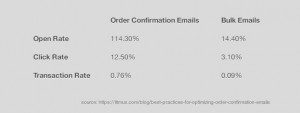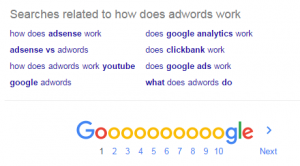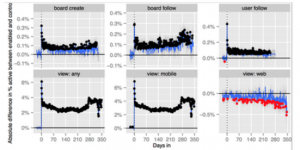Are millennials really so perplexing? Can marketing to them be so different from what came before? This seems to be the message of many articles you find online about how to market to that mysterious youth demographic, a consistent theme of which is that millennials are like no other consumer in history. Marketing to them supposedly requires rethinking everything we once took to be true about marketing, with the added complicating factors of digital technologies and a shifting political landscape. This can be unsettling to marketing professionals, as we feel more lost and disempowered than ever, unsure how to influence the largest and most powerful consumer group since the baby boomers (although not everyone might agree with that statement).
But the “millennial question,” as we might call it, has become more important than ever now because these days those confounding kids are no longer so young—the youngest cohort from that generation will now be in their early 20s with the oldest in their mid 30s. So what we’re really talking about are young adults, often with homes and children and jobs, and with a desire to move up in the world and with a healthy interest in acquisition. Sound familiar? It should.
I took a look back at the baby boom generation circa the 1970s, a time when boomers—also seen as self-absorbed and once dubbed the “Me Generations”—were hitting their prime and were at about the same age as our current leading-edge millennials. I wanted to remind myself what the market looked like back then and do a kind of comparison. What I found were some differences, yes, but actually a whole host of critical similarities that proved much more interesting. Technology, fashion, attitudes, and politics may have changed, but these two groups aren’t nearly as different as you think.
As Mark Twain is purported to have said, history may not repeat itself, but it often rhymes. Here are five counterintuitive similarities that boomers and millennials more or less share:
1. Brand Equity vs. Brand Story
Prior to the 1970s, marketing focused largely on product attributes, with most advertising oriented towards driving transactions, not building brands. Customers would get a description of a car or razor complete with a list of functional features, and that’s it. In the 70s, that changed. Consumers wanted greater connection to brands, and brands began to take precedence over individual products themselves. We began to see companies building constructs and using new phrases like “brand essence,” “value proposition,” and “brand equity.” And that isn’t very different from what’s happening today. Now, we focus on brand story. I would argue that the notion of brand story evolved from brand essence, making the two eras intimately entwined. The point is that in the 70s, the customer was suddenly at the center of marketing efforts. The same holds true today, just in a slightly different way.
2. Endorsement vs. Influence
When Joe Namath famously donned a pair of Beautymist pantyhose or when Mean Joe Green chugged a bottle of Coke, the country went crazy and sales jumped through the roof. Advertisers thereafter scrambled to find celebrities who reflected the values of their brand and quickly signed them up. Today, things have changed—or have they? Instead of endorsers, marketers now look for social media influencers, the new kind of celebrity, to use in ads. Just as in days of old, influencers talk about the product and why they buy it. In this iteration, the engagement seems more real and more credible because it comes from someone who, through YouTube or Instagram, has shown how much they share your personal interests and tastes. Fundamentally, though, the concept is no different from that grainy old-school Joe Namath TV spot.
3. New Media vs. New Media
Digital marketing—including social media, paid search, digital ads, etc.—offers a host of new ways for marketers to reach customers. Through the use of brand new tools like the internet and big data, targeting is more effective than ever before. But in the 70s, marketers also faced the expansion and growth of a strange and unwieldy new media—it was called color television and human society had literally never known anything like it. In the few years just following WWII, television culture did not exist. But by the 70s well above 90% of American households had a color TV in them, and TV advertising began laying waste to radio and print. Marketers were in a panic back then just as we’ve been experiencing over the past few years. And just like today, advertisers of the past had to figure an effective way to negotiate these new delivery systems and, finally, triumph by finding ways to make their brands unique and compelling.
4. Advertising vs. Content
If you’ve ever flipped through an older issue of a popular magazine you’ll recall spending far too much time trying to find an actual article or essay, as they’re virtually lost among the pages and pages of colorful print ads. I suspect the ratio of ads to content, especially for a fashion magazine, can be somewhere in the range of 20:1. That’s similar to our situation today with online ads, with so many websites forcing noisy, flashy, interruptive digital ads on you while you’re trying to find that interesting new piece in a recent issue of Harper’s. Just as it was the case with the glamour magazines, advertisers are having to either declutter websites or find a way to appeal to audiences without annoying them with constant interruptions. Although this issue was print-based and therefore fundamentally different back in the 1970s, the battle between ads and content continues today, just in a new form.
5. The Me Generation vs. The Me Generation
In the mid-70s, Tom Wolf coined the phrase “Me Generation” when speaking about the peculiar new narcissism of baby boomers. He bemoaned the fact that a generation of people were so self-absorbed and fixated on accumulating material things, drawn to brands like Mercedes and wont to engage in big acts of conspicuous consumption like buying up beach houses and yachts. They later became the “Greed is Good” generation of the 1980s. So, marketers decided to play to their egos, creating an air of superiority tied to certain products that were considered high class—Swiss Army, Patec, BMW, Rolex. The same is true today, just in a different way. No, millennials are not interested in material things, but they are drawn to experiences. And often times those experiences have to be pretty lush and exclusive to really sell. But fundamentally, whether it’s hiking the Camino de Santiago or simply finding the best avocado toast, they’re drawn to the emotion and the satisfaction they get from real-life engagement. Some might even say they do this to achieve the very same air of superiority that boomers were after.
This is not to say that there aren’t important differences between the two generations—there are. As the world has changed, priorities have shifted and media has evolved. Marketing to millennials as though they’re just like baby boomers is not a good idea. But keeping in mind that they’re not as different as you think can be more helpful than you know. As dead and gone as the 70s feels in the marketplace of 2019, the professionals of that era and how they grappled with generational differences in their branding has plenty to teach us in the here and now.
Business & Finance Articles on Business 2 Community
Author: Chris Weissman
(58)
Report Post





